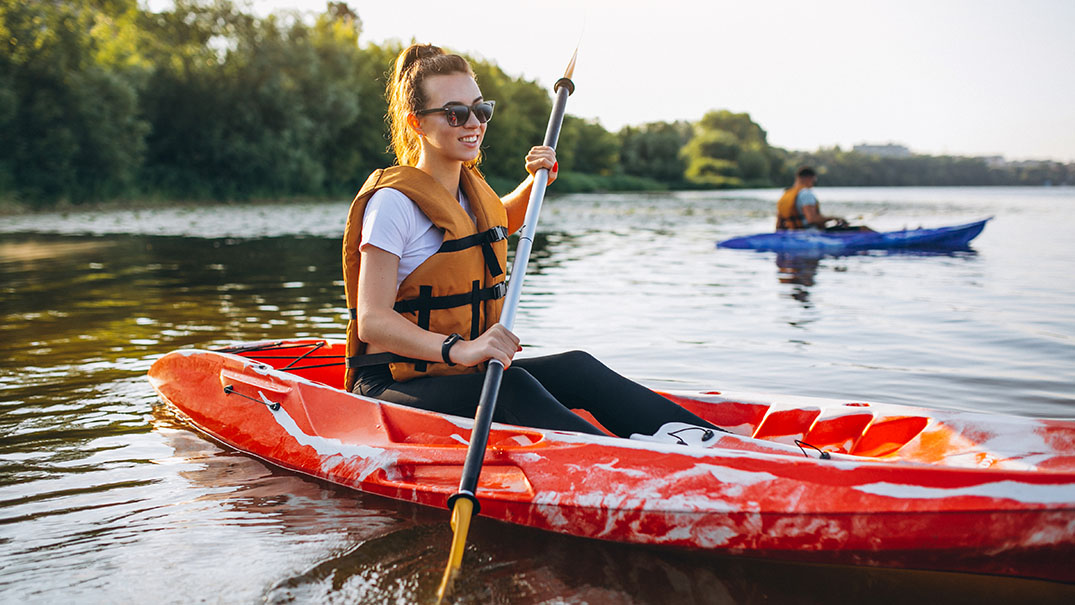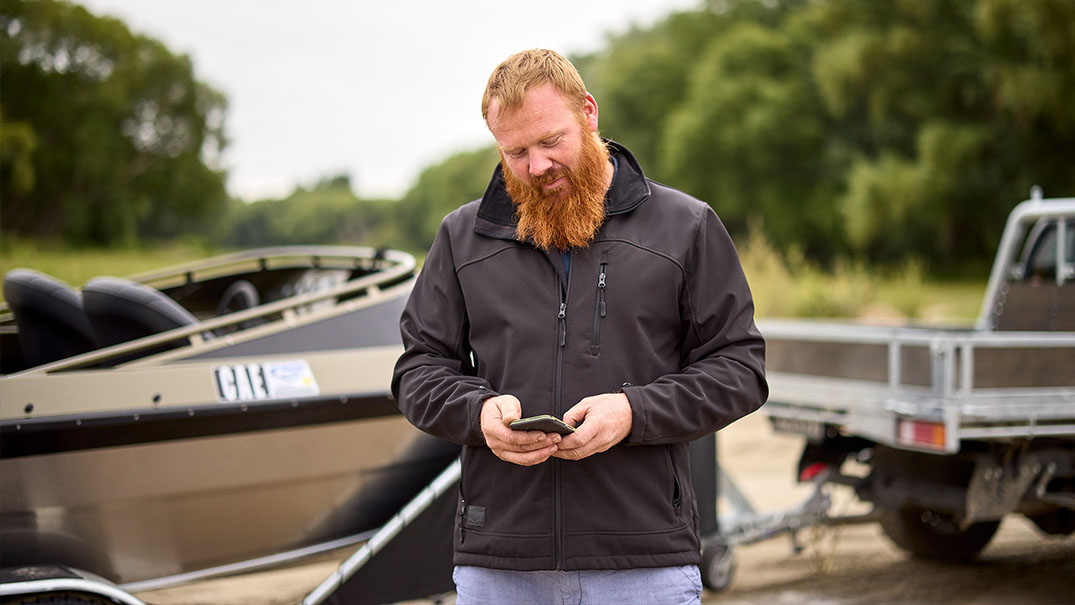Safer boating
Whatever your level of experience, before heading out on the water make sure you’ve prepped your vessel, checked your gear, and know the rules.
Always follow the five key messages from the Safety Boating Code:
- Wear your lifejacket
- Take two waterproof ways to call for help
- Check the marine weather forecast
- Avoid alcohol
- Be a responsible skipper
Please check if there are any hazards you need to know about before heading out on the water and be sure to report accidents or bad behaviour that you see. Learn more about safer boating at Maritime NZ's Safer Boating website.
Wear your lifejacket
Lifejackets, also known as Personal flotation devices (PFDs) and buoyancy vests — come in a variety of designs and sizes. It’s important to wear the right one in the right situation, as it could save your life. Looking after your lifejacket (PDF file, 311KB) properly will ensure it has a longer life.
Lifejackets provide more than flotation. They allow a person in the water to keep still and conserve energy, which helps delay the onset of hypothermia. Lifejackets also provide protection from injury in boating collisions or if your boat runs aground. Find out more about lifejackets at the Maritime New Zealand website.
Under Canterbury boating rules:
- Lifejackets must be worn at all times, on craft 6m or less in length except when the craft is tied up or at anchor*
- All craft must carry lifejackets of an appropriate size for every person on board*
- Everybody must wear their lifejacket if there are circumstances which cause danger or risk to the safety of people aboard, for example:
- Tides, river flows, rough seas (e.g. bar crossing)
- Adverse weather, adverse visibility or emergencies
- Poor visibility including hours of darkness
- Other high-risk situations can include coast or lakes with many hazards (e.g. Kaikōura); or areas where there is very high-intensity boating activity, which occurs at peak times in many smaller lakes (eg Lake Opuha and Lake Ruataniwha).
*There are a small number of exemptions to these overall rules, and these are stated in the Navigation Safety Bylaw (PDF file, 9.2MB). If you’re in any doubt about whether you should or shouldn’t wear a lifejacket, put it on.
Take two waterproof ways to call for help
Remember, being seen and heard is crucial when you're out on the water. All recreational boaties should carry two forms of communication that are appropriate for the area they are in. Certain types of communication are more effective in different areas, so prepare for your surroundings.
There are three broad categories of communication equipment:
- Those that use satellites – principally emergency locator beacons (EPIRBS, PLBs) and satellite phones.
- Those that use land-based stations – principally marine radio (VHF) and mobile phones.
- Those that rely on audio or visual signals – including flares, lights, whistles, and horns.
Satellite Emergency Distress Beacons
EPIRBS or PLBs provide the most reliable way of signalling a distress situation. They provide a one-way indication of distress and a boat’s location directly to SAR authorities anywhere in the world and are suitable for vessels at sea and on inland waterways. Emergency Distress Beacons don't cost anything to run, and must be registered on the Beacons website.
EPIRBs, being slightly bulkier, are designed specifically for boats, ships and other activities on water and can float with their antenna above the water. PLBs are designed more for land usage. While all PLBs are waterproof, most cannot float with their antenna out of the water and they have a shorter battery life than an EPIRB.
VHF radios
A VHF radio is designed to operate in the marine environment and is used extensively as a communications tool by the coastal boating community. A 24/7 distress and safety radio service is provided by Maritime New Zealand, which monitors the international Channel 16 distress channel. Coastguard New Zealand also provides coverage around large parts of the coast.
VHF radio users are required to hold a Maritime Radio Operator’s Certificate and have an individual call-sign, with courses and call-sign information available from Boating Education (these are not required, however, if making a distress or emergency call on channel 16). A call-sign allows the Search and Rescue sector to quickly access the contact details you have provided.
VHF radio has limited coverage on inland waterways such as the Waitaki Lakes. When you're out on inland rivers or lakes, a distress beacon such as an EPIRB or PLB is a good first choice of communication. Flares, air horns or torches are great back-up forms of communication on inland waterways.
Mobile phones
Almost everyone carries a mobile phone these days, but geographic coverage can be limited, particularly on more remote inland waterways and at sea. Unlike maritime radio, a mobile phone does not allow a boatie in distress to broadcast for help to other boaties that might be in the vicinity.
Nevertheless, phones are a very useful safety communications back-up tool, particularly given that most people carry one. Ensure your phone remains usable by keeping it dry in a waterproof lanyard bag. Ensure your phone remains accessible by carrying it on your person.
Flares
Pyrotechnic flares and waterproof torches are widely recognised and, where practical, may be considered for inclusion in an emergency communication kit.
The major limitations of flares are that they are dependent on other boaties in the vicinity (or people on shore) seeing them during the relatively short time they are alight, understanding what they mean, and knowing how to respond.
Whistles, horns, and mirrors
There are a range of other signalling devices that can be used for communication, including a whistle, manual horn (aerosol canister, rechargeable, powered), mirror etc. Like flares, they are very reliant on someone being able to see or hear the distress signal, knowing what it means, and then being able to act on it.
Check the marine weather forecast
Before you head out, always check the marine forecast, not just the general weather forecast. If it’s stormy or the weather looks like it will deteriorate when you want to be on the water, play it safe and consider staying on land.
On the lake: check the high country and rural forecasts
Lake conditions can change extremely quickly, and if things go wrong, help can take longer to reach you. The water is often much colder than the ocean if you fall overboard.
Be sure to check the high country forecast for the area you’re boating in, the rural forecast, and the general weather forecast. Be prepared for the possibility that conditions may change quickly; they often do.
If there is a nor’wester wind forecast, stay on land. Nor’westers can cause fast floods to hit as snow melts quickly in the mountains, making its way down to lakes and rivers.
Avoid alcohol
Alcohol and water don’t mix. Alcohol can impair your ability to react, perform simple tasks, judgement and sense of direction. These factors put yourself and others at risk. They also increase the likelihood of you ending up in the water by accident.
All on board need to stay alert and aware. Never drink alcohol while on a vessel.
Be a responsible skipper
It is your responsibility to know and understand the rules on the water before heading out.
- Check if there are any hazards you need to know about before heading out on the water and be sure to report accidents or bad behaviour that you see.
- Give your vessel a thorough check and ensure it is in sound condition before setting out.
- Make sure someone on land knows your plans, and what time to expect you back. If you don’t arrive home on time, they should call for help.
- It’s also important to keep our waterways clean and pest-free. Follow the 'Check, Clean, Dry' principles for cleaning and decontaminating your equipment and vessels before and after heading out on the water.
- Check out our handy guide to good boat maintenance practices which will help you reduce your environmental impact.
- All boats in Canterbury – including jet skis – need an identifying number on each side of the hull. See more on this below.
Boat and jet ski identification
All boats in Canterbury – including jet skis – need an identifying number on each side of the hull. Read on to learn why, and what you need to do to ensure that your boat/jet ski complies with the bylaw. There are two main reasons for having this identification:
- It allows people to provide identification to the Harbourmaster’s Office when they are reporting concerns with boating behaviour.
- It provides a starting point for locating the owners of any washed-up vessels.
Many other regional councils throughout Aotearoa require boat identification; this is a simple and cost-effective method to identify boat owners.
The ID must be at least 90 millimetres high and be distinguishable to the naked eye from 50 metres away. It could be printed on a sticker from a sign shop or it could be painted on.
What ID do I use?
- If your boat is towed on a trailer, your ID will usually be the same as your trailer registration number.
- If your boat is not towed on a trailer, your ID could be your VHF radio call sign or an existing Maritime New Zealand registration number.
- If you belong to a sporting body or boat club, check with them as they may have had an ID approved by us already that you can use on your boat.
What are the exceptions?
Non-powered vessels (measuring 6 metres or less), paddle craft, and vessels solely powered by oars only need a contact name and phone number written somewhere on board. It’s as simple as using a marker pen and writing it on. This applies to stand-up paddleboards, row boats, sailing boats (if they are under 6 metres), canoes, kayaks, etc.
If you’re unsure please email harbourmaster@ecan.govt.nz. For more information, read the Navigation Safety Bylaw 2016 (part 5).
Canterbury Safer Boating Guide
The Canterbury Safer Boating Guide brings together all the key information you need to know if you’re heading out on the water in our region, whether you’re on a kayak, paddle board, jet ski or boat.
The guide includes maps, the regional Navigation Safety Bylaws and safety information. This is essential reading for people of all experience levels, whether new to the water or a lifelong boatie. Download the guide (PDF file, 12.4MB).


